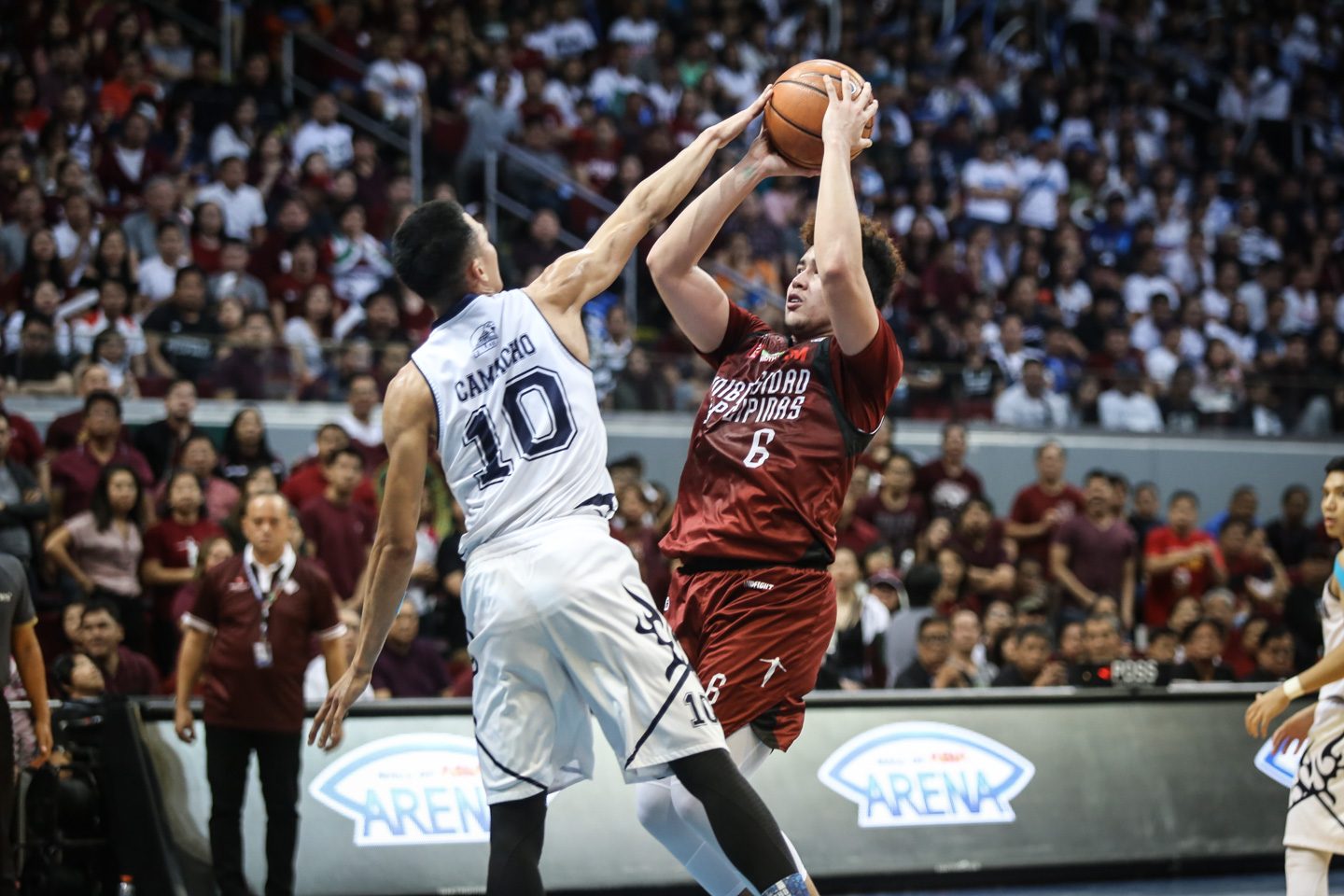SUMMARY
This is AI generated summarization, which may have errors. For context, always refer to the full article.

MANILA, Philippines – With the UAAP basketball season coming to a close, alumni of the University of the Philippines (UP) reiterated their call for fair officiating after the UP Fighting Maroons narrowly edged the Adamson Falcons, 73-71, last Saturday, November 24, at the Mall of Asia Arena.
NowheretogobutUP Foundation (ntgbUP) chairperson and lawyer Agaton Uvero stressed this on Tuesday, November 27, saying that the initial report of the group’s referee-consultants revealed that calls made in the tightly-contested matchup “may have had an impact on the outcome of the game.”
“This is what we have always been wary of and what we want to avoid. As we said before, win or lose, we just want games that will be decided by the players, not the referees. Games that will be won by plays on the court, not by whistles on the sidelines,” stressed Uvero, who had earlier revealed that his group is tapping the services of veteran referees to monitor and evaluate officiating in UP’s games.
Uvero said that the ntgbUP consultants pointed out “not just the disturbing disparity in the fouls called against both teams, but the quality and timing of the calls that were made.” (HIGHLIGHTS: Adamson vs U.P. – UAAP Season 81 Final Four Game 1)
“The numbers, we believe, speak for themselves. But what is bothersome is these calls were being made in crucial junctures of the game,” lamented Uvero.
According to statistics released by the UAAP after Saturday’s thriller, a total of 25 fouls were called on the Maroons, as opposed to 12 fouls on the Falcons.
The gap was widest in the first and last quarters of the game; in the first period, 8 fouls were called on UP players, while only 4 fouls were called on Adamson in 10 minutes of action. In the 4th quarter, UP players were again called for 8 fouls, while Adamson players were called for 4 fouls.
“The calls in the 4th quarter really changed the complexion of the game. I hope the UAAP looks into it because this is alarming,” explained Uvero.
In the 4th quarter, UP was assessed with its 5th team foul at the 7:12 mark. The foul, called on forward Javi Gomez de Liaño, put the Maroons in penalty for the rest of the game. The first foul called on the Falcons was with 5:27 left in the game.
UP was in the penalty situation in 3 of the game’s 4 quarters, while Adamson was never in penalty. Overall, the Falcons were given 31 free throws, compared to UP’s 12.
The UP-Adamson contest was officiated by Ariel Bermeo, Allan Manzano, and Don Arguelles. Bermeo was once slapped a two-game ban by the UAAP in 2010 for “bad calls” during a controversial game between UP and National University.
Bermeo was also one of 3 officials cut by the Philippine Basketball Association in 2013 “for serious repeated lapses in judgment in different games they officiated during the playoffs.”
Technology and third-party observers
Uvero urged the UAAP to consider tapping “third-party observers” to evaluate the performance of its referees, and to adopt the use of technology to track and study the calls made by its officiating crews.
“We believe the UAAP should put an emphasis on improving the officiating and assuring the players and fans that they are doing everything to keep the game pure. This is extremely important to dispel rumors that gambling syndicates allegedly use underhanded methods to influence the results of the games,” added Uvero.
Engineer Hyatt Basman, one of the UP alumni tapped to develop the UPMBT’s analytics program, said that UP’s video analysis team was already working on a referee tracking program to objectively assess the performance of referees working the UAAP’s games.
“We shouldn’t just complain about bad calls and accuse referees of bias without a clear basis. We have to find ways to quantitatively and qualitatively evaluate the calls of the refs so that we can objectively assess their performance,” explained Basman.
“The technology to track player tendencies is already available, and the same technology can and should be applied to referees. Other basketball leagues are doing it, and the UAAP should put some thought into doing the same.”
The data, Basman said, can be used to evaluate and rank the UAAP’s referees to determine which ones should be tapped for the UAAP’s Final Four and championship rounds. – Rappler.com
Add a comment
How does this make you feel?
There are no comments yet. Add your comment to start the conversation.